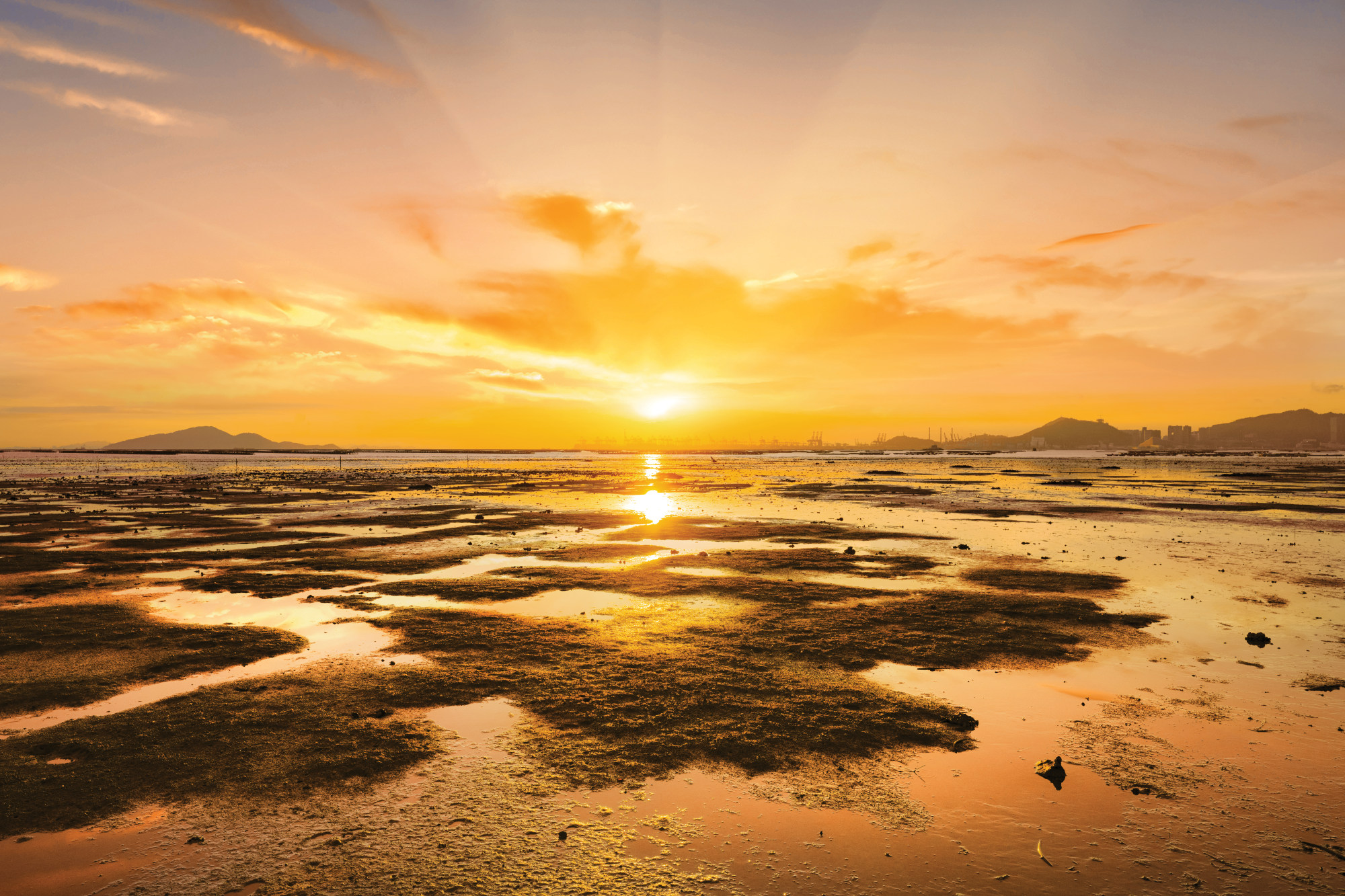
Wetlands are key to securing a climate-resilient Northern Metropolis
- Hong Kong’s wetlands play a vital role in flood protection but this function has been largely ignored
- Respecting and tapping into the existing ecosystem can help protect the Northern Metropolis and other coastal areas in the region that are vulnerable to climate change
The planned Northern Metropolis encompasses a large area of floodplain wetland, mangrove and fish ponds in the northwestern New Territories, where flood risk is already a concern. Hong Kong’s wetland ecosystem is of international importance to the migratory water birds along the East Asia-Australasia Flyway.
These wetlands function as natural buffers that absorb rainwater and are adapted to being flooded. During the black rainstorm, they stored tremendous amounts of rainwater and protected adjacent buildings and roads from flooding. They then quickly returned to normal once the rains subsided and excess water drained away.

The recently published Northern Metropolis Action Agenda disappointingly focuses far more on development and urbanisation than conservation of Hong Kong’s natural assets. Plans to develop wetlands in the northwestern New Territories raise questions about whether the government values the ecosystem services such as flood protection provided by wetlands and their role in sustaining livelihoods.
The existing wetlands and fish ponds of the northwestern New Territories offer nature-based solutions to many of Hong Kong’s environmental concerns. They have immense water storage capacity and can serve as natural detention tanks to lessen flooding risks. In addition, they can continue to be used to raise fish and other aquaculture products.

The potential to increase the area of mangroves therefore lies in fish ponds, which were originally created from impounding coastal habitat within the Deep Bay wetlands. An estimated 200 to 300 hectares of fish ponds have been abandoned or become inactive. They have the potential to be restored and managed as an integrated mangrove-aquaculture system that provides benefits such as fish production, flood protection, wildlife conservation and carbon sequestration.
To fully realise the flood alleviation service provided by wetlands in the northwestern New Territories, the Development Bureau and Drainage Services Department must incorporate them in the design of drainage and flood storage systems for the Northern Metropolis. It would also be timely to initiate pilot field research on how to optimise carbon capture, aquaculture production and biodiversity enhancement within inactive ponds on government land.
The knowledge and experience gained would be invaluable for the planning and management of future wetland conservation parks envisaged for the Northern Metropolis. These lessons should also be shared across the Greater Bay Area and other coastal areas in the region which share similar climate vulnerability.
Shing Yip (Joe) Lee is an adjunct professor at the Chinese University of Hong Kong and chair of the mangrove specialist group at the International Union for Conservation of Nature (IUCN) Species Survival Commission
David Dudgeon is emeritus professor of ecology and biodiversity at the University of Hong Kong and chairman of Mai Po Management Committee, WWF-Hong Kong
Dr Michael Lau is founder of the Hong Kong Wetlands Conservation Association and adjunct professor at the School of Biological Sciences, the University of Hong Kong




